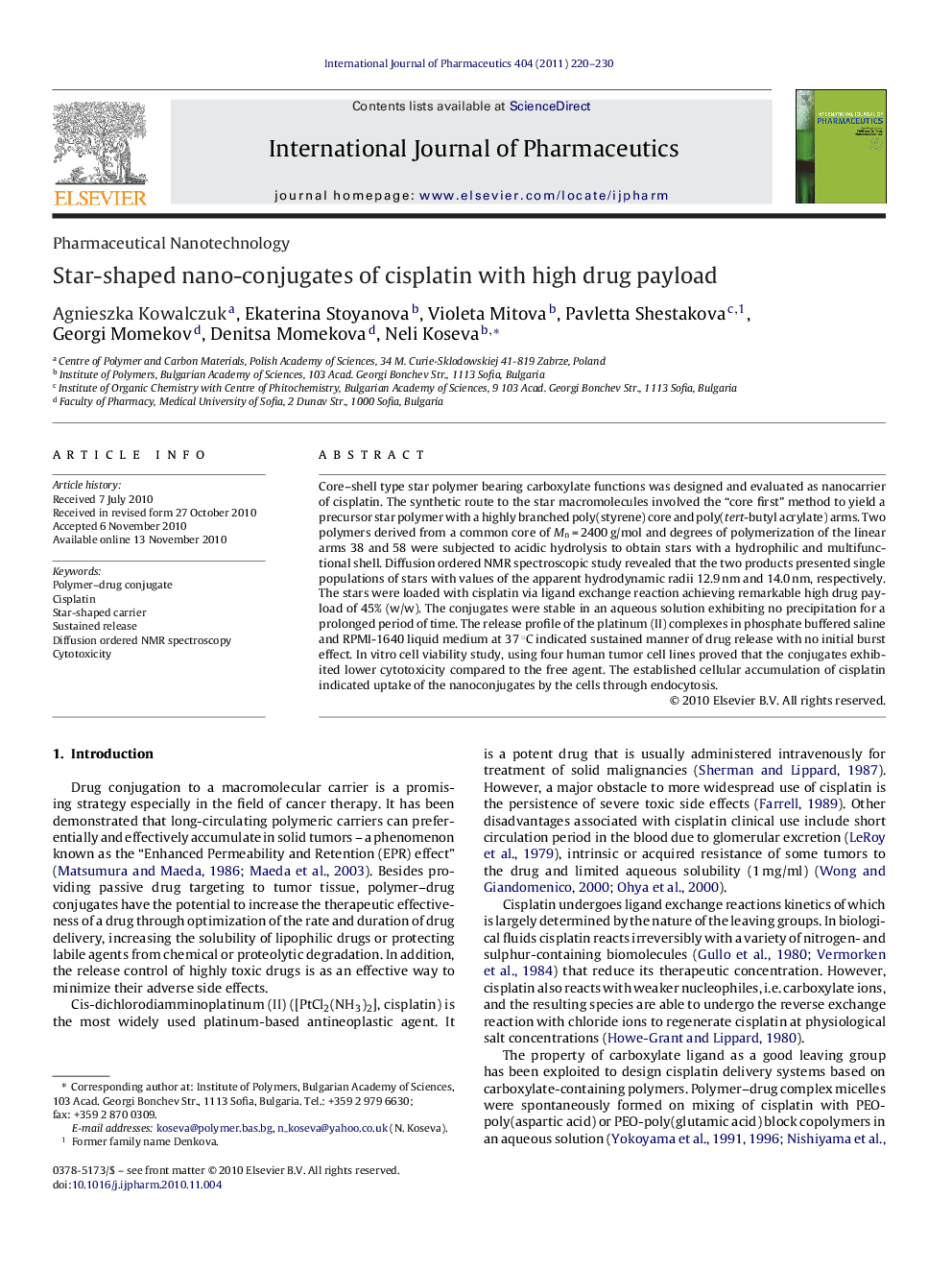| Article ID | Journal | Published Year | Pages | File Type |
|---|---|---|---|---|
| 5821278 | International Journal of Pharmaceutics | 2011 | 11 Pages |
Abstract
Core-shell type star polymer bearing carboxylate functions was designed and evaluated as nanocarrier of cisplatin. The synthetic route to the star macromolecules involved the “core first” method to yield a precursor star polymer with a highly branched poly(styrene) core and poly(tert-butyl acrylate) arms. Two polymers derived from a common core of Mn = 2400 g/mol and degrees of polymerization of the linear arms 38 and 58 were subjected to acidic hydrolysis to obtain stars with a hydrophilic and multifunctional shell. Diffusion ordered NMR spectroscopic study revealed that the two products presented single populations of stars with values of the apparent hydrodynamic radii 12.9 nm and 14.0 nm, respectively. The stars were loaded with cisplatin via ligand exchange reaction achieving remarkable high drug payload of 45% (w/w). The conjugates were stable in an aqueous solution exhibiting no precipitation for a prolonged period of time. The release profile of the platinum (II) complexes in phosphate buffered saline and RPMI-1640 liquid medium at 37 °C indicated sustained manner of drug release with no initial burst effect. In vitro cell viability study, using four human tumor cell lines proved that the conjugates exhibited lower cytotoxicity compared to the free agent. The established cellular accumulation of cisplatin indicated uptake of the nanoconjugates by the cells through endocytosis.
Related Topics
Health Sciences
Pharmacology, Toxicology and Pharmaceutical Science
Pharmaceutical Science
Authors
Agnieszka Kowalczuk, Ekaterina Stoyanova, Violeta Mitova, Pavletta Shestakova, Georgi Momekov, Denitsa Momekova, Neli Koseva,
